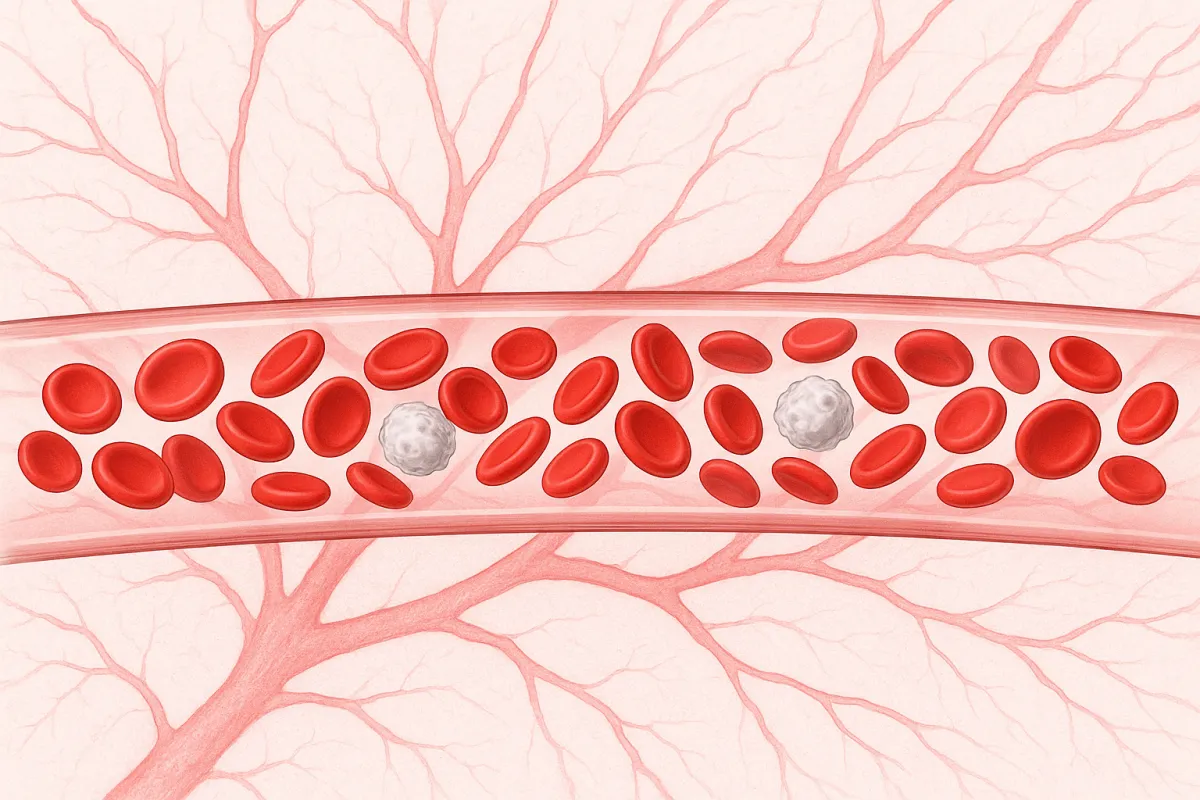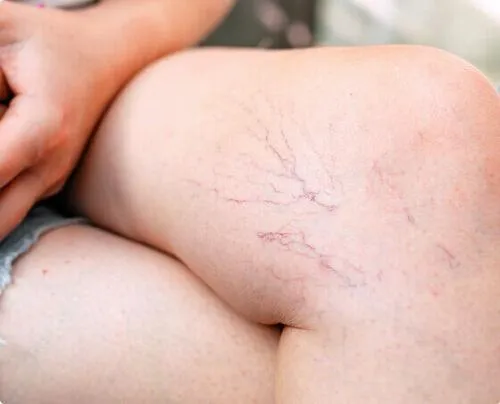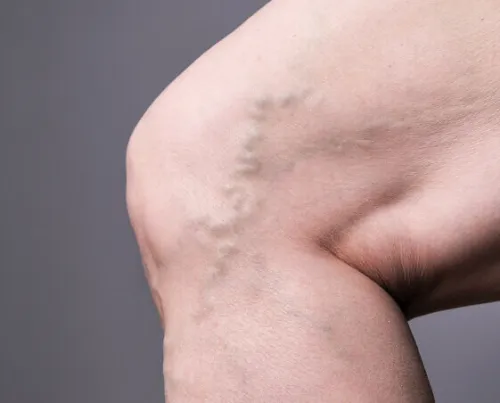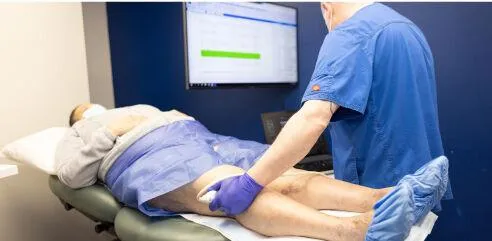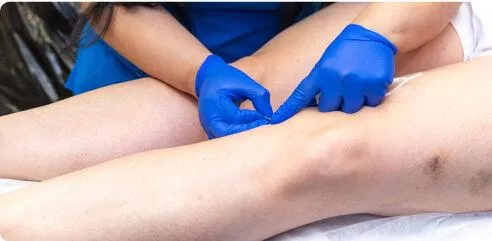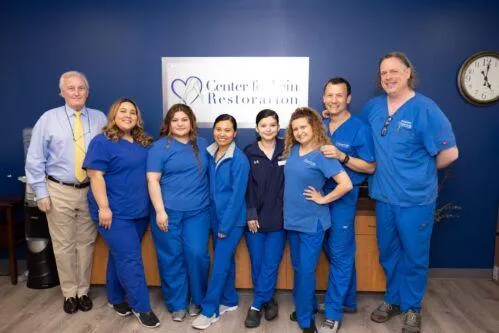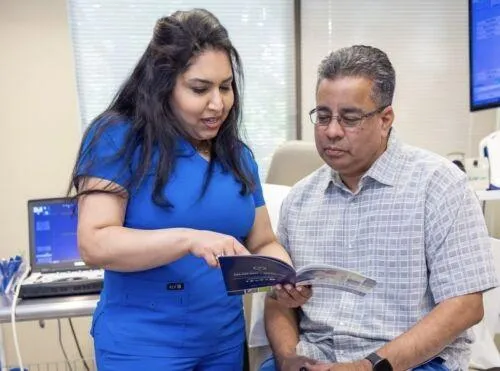575-519-6613
English
Espanol
Spider Veins
Causes, Symptoms, and Treatment
Picture Your Life Without Spider Veins or Leg Pain
Don’t let spider veins interfere with your life. Relief from the discomfort and appearance of these web-like surface veins is possible. At Vein and Vascular, our specialized treatments target problem veins in the legs to restore both comfort and confidence. Say farewell to spider vein pain and hello to healthier legs. Your path to pain-free living starts today.
What are spider veins?
Spider veins, or telangiectasias, are tiny dilated veins that form just beneath the skin’s surface. Often called “thread veins” or “hidden varicose veins,” they appear as fine red, blue, or purple lines that resemble webs or branching patterns. Unlike varicose veins, spider veins don’t bulge and are typically less than 1 millimeter wide. They most commonly appear on the face, thighs, calves, and around the ankles.
While often seen as a cosmetic issue, spider veins can sometimes signal an underlying problem known as venous reflux — a condition linked to chronic venous insufficiency (CVI). CVI develops when the small valves in leg veins become weakened, allowing blood to flow backward and pool.
Spider veins can develop for many reasons, including genetics, hormonal changes (such as pregnancy), or spending long hours sitting or standing. These factors can all contribute to vein disease and impact overall circulation.
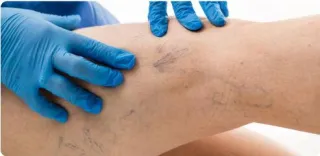
Who gets spider veins?
Spider veins are a common condition that can affect people of all ages, though certain factors make them more likely to develop. Family history is a key contributor — if spider veins run in your family, your chances of getting them are higher. Lifestyle also plays a role; long periods of sitting, lack of activity, or poor circulation can increase your risk.
The good news is, there are steps you can take to help prevent spider veins. Staying active, maintaining a healthy weight, and avoiding prolonged inactivity can all make a difference in keeping your veins healthier.
And you’re definitely not alone. In fact, spider veins affect millions of people across the U.S.:
Nearly 50% of women between ages 40 and 50 develop spider veins
About 75% of women ages 60 to 70 have them
Around 25% of men ages 30 to 40 are affected
Nearly 50% of men over age 70 experience spider veins

How Do Doctors Diagnose Spider Veins?
Diagnosing spider veins starts with a careful evaluation by a board-certified vein specialist. At Vein and Vascular in Las Cruces, we use advanced tools such as duplex ultrasound to detect venous insufficiency and determine the best treatment plan. Our approach not only improves the cosmetic appearance of spider veins but also restores healthy leg vein function.
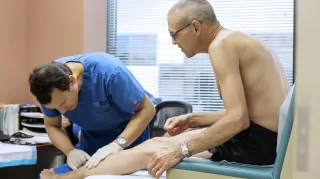
Common Diagnostic Tests for Spider Veins:
Duplex Ultrasound
This non-invasive test uses high-frequency sound waves to create images of your leg veins while measuring the speed and direction of blood flow. The procedure is painless, takes about 30 minutes, and carries no risks or side effects.
Color-Flow Imaging (Triplex Ultrasound)
An advanced form of Doppler ultrasound, this test adds color to the images, making it easier to see the direction of blood flow. Different colors indicate whether blood is moving toward or away from the heart, helping specialists interpret results more clearly.
Magnetic Resonance Venography (MRV)
This diagnostic study combines MRI technology with a contrast dye to provide detailed images of the veins. MRV can also help identify other potential causes of leg pain beyond vein-related issues.

Schedule your consultation with a Vein and Vascular specialist in Las Cruces today.
Contact Vein and Vascular in Las Cruces today: schedule online, call +1 575-519-6613, or complete the form. Our patient services team is ready to assist you Monday through Friday.
Contact Us
Ready to book an appointment now?
Contact
700 S. Telshor
Suite 1460
Las Cruces, NM 88011

